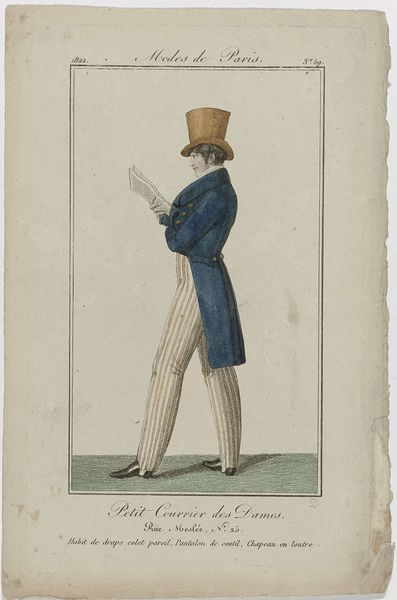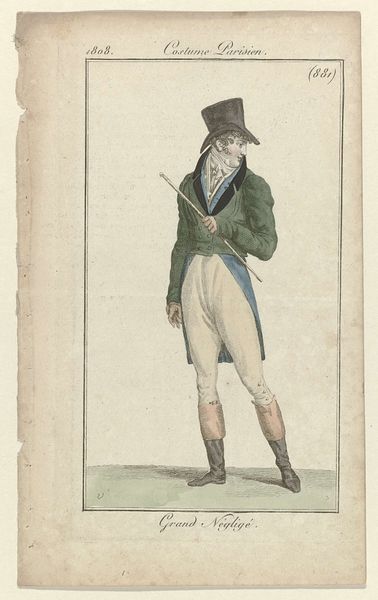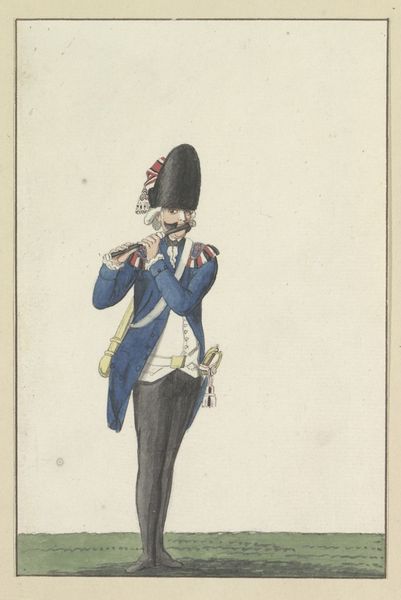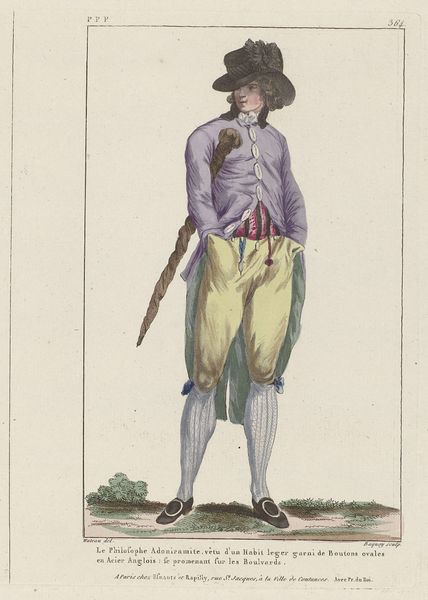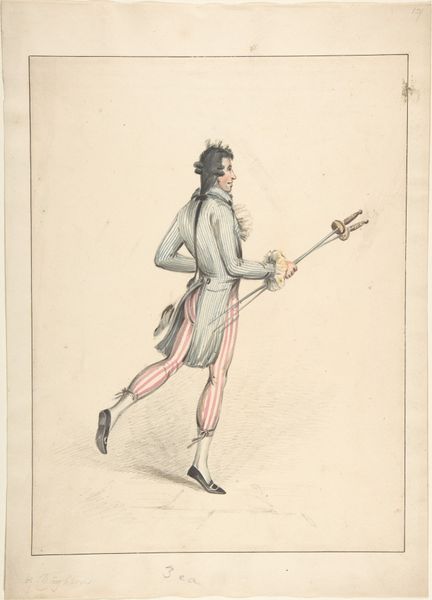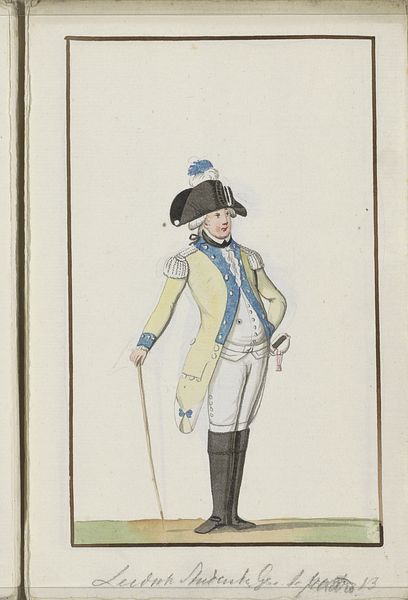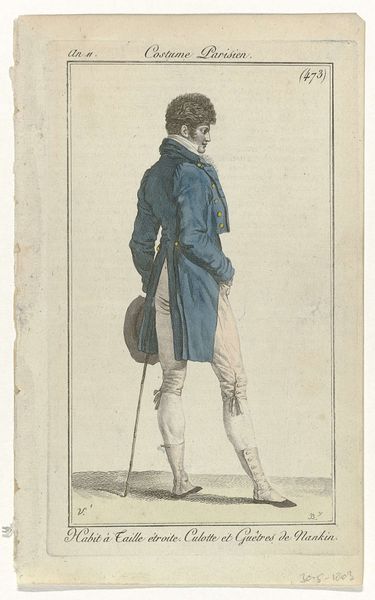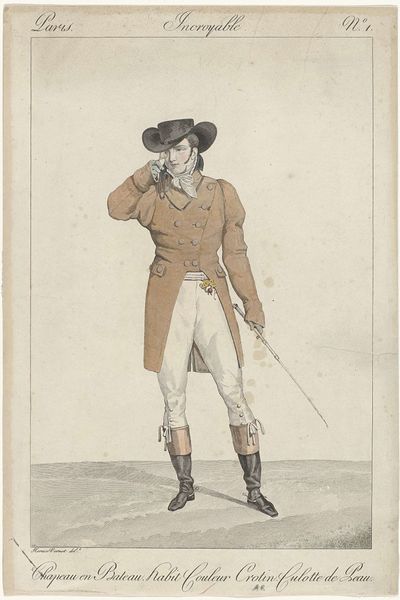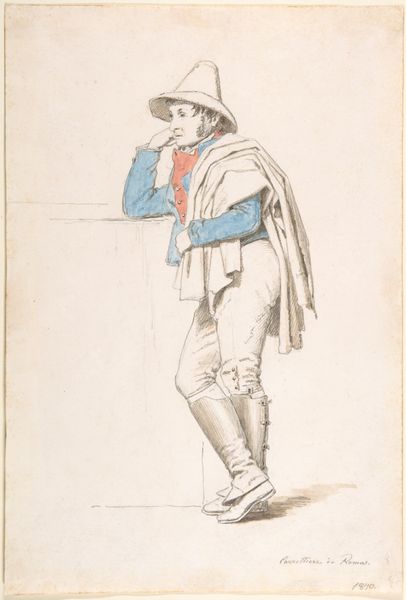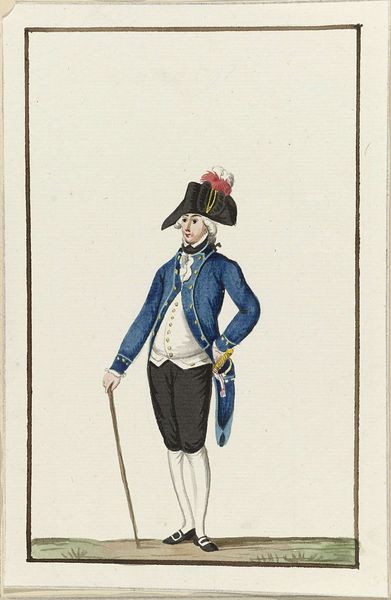
drawing, watercolor
#
portrait
#
drawing
#
caricature
#
cartoon sketch
#
watercolor
#
romanticism
#
sketchbook drawing
#
watercolour illustration
#
cartoon carciture
Dimensions: height 345 mm, width 232 mm
Copyright: Rijks Museum: Open Domain
Editor: Here we have "Standing Man with a Spyglass," a drawing made with watercolor by Pieter van Loon, sometime between 1811 and 1873. There's a comedic feel to it; he looks so self-important! How do you interpret this work, and how might it have been received in its time? Curator: Well, what immediately strikes me is the intersection of social critique and representation of masculinity. Consider the Dutch context of the 19th century – a period of significant social and political upheaval. The figure’s exaggerated features, the way he holds the spyglass, it all points to a certain class and its relationship to leisure and observation. Do you see the caricature as a straightforward mockery, or perhaps something more nuanced? Editor: I initially saw it as simple mockery, but now I'm thinking about the gaze. The spyglass implies observation from a distance, perhaps reflecting a detachment from the realities of the time for the upper class. Curator: Precisely! Think about how societal structures allowed certain groups to remain aloof, passively observing rather than actively participating in social change. His clothing and stance, symbols of power and privilege, are simultaneously emphasized and undermined by the caricature. What does this tell us about the artist’s own position, his relationship to the subject? Editor: It suggests van Loon might have been questioning the established order, using humor as a tool for social commentary. I hadn’t thought about it that deeply. Curator: These visual cues invite us to unpack power dynamics and societal expectations embedded in everyday life. This artwork encourages us to engage critically with history and its reflection in art. Editor: Absolutely, viewing it through a social lens reveals so much more than just a funny picture. I appreciate the new perspective! Curator: My pleasure, the beauty of art is that it always invites dialogue and reinterpretation through different perspectives.
Comments
No comments
Be the first to comment and join the conversation on the ultimate creative platform.
